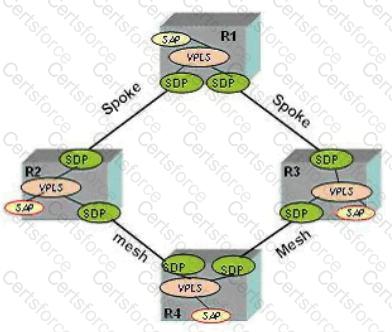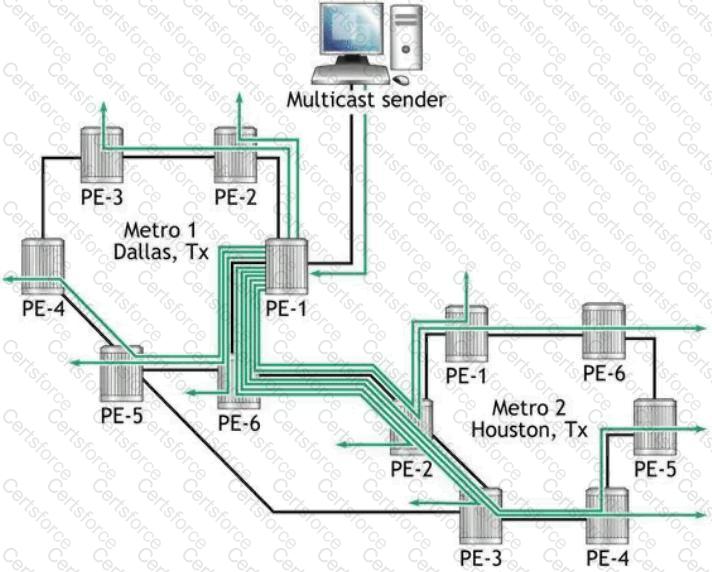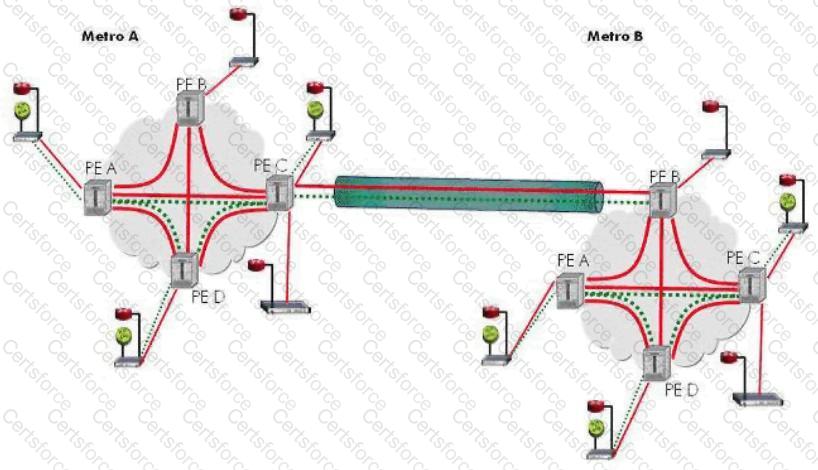What is the SA in the Ethernet frame used for by a layer 2 switch?
If a management VPLS is administratively disabled what will be the status of the associated user VPLS SAPs?
If the command "disable-learning" has been added at the VPLS level, then MAC entries which have already been learned will not be aged.
In the IEEE 802.1 ag, how are merged services detected?
Click on the exhibit below.

If the SDP between R2 and R1 goes down, what devices will be reachable from R2 through the VPLS?
What are the benefits of a hierarchical VPLS architecture? (Choose 3)
Click on the exhibit below.

Assume PE-1 has a mesh-sdp configured to every PE node in both Metro networks. What could be done to prevent the bandwidth replication between Metro 1 and Metro 2?
Which protocol is used to signal the status of the active links between the PE and the CE in MC-LAG?
Click on the exhibit below.

A new site is added to PE-D of Metro B. Which of the following statement below is true?
Fill in the blank for this next sentence. Flooded traffic received on any ____________ in the service is replicated to other spoke SDPs and SAPs and not transmitted on any mesh SDPs.